Table of Contents
- Understanding Dog Aggression
- Why Professional Training Matters
- Choosing the Right Aggressive Dog Training Near Me
- Effective Aggressive Dog Training Techniques
- Local Statistics and Insights
- Top Benefits of Training Your Aggressive Dog
- DIY Training Tips to Supplement Professional Guidance
- Red Flags to Avoid in Aggressive Dog Training
- Conclusion
- FAQs
Training an aggressive dog can feel overwhelming, especially if you’re trying to ensure the safety of your family and community. However, the right approach and professional assistance can make all the difference. If you’re searching for “aggressive dog training near me” this guide is for you. We’ll explore effective methods, expert recommendations, and factors to consider when choosing the best training services.
Understanding Dog Aggression
Aggression in dogs can manifest in various ways, including growling, barking, biting, or lunging. To address these behaviors effectively, it’s crucial to understand the underlying causes:
- Fear-Based Aggression: Dogs often act aggressively out of fear. They perceive a threat and respond defensively.
- Territorial Aggression: Some dogs aggressively guard their territory, including their home or yard.
- Resource Guarding: This occurs when a dog aggressively defends food, toys, or other possessions.
- Social Aggression: Poor socialization can lead to aggressive behavior around other animals or people.
- Medical Issues: Pain or health problems can trigger unexpected aggression.
Understanding the root cause is the first step in choosing the right training program.
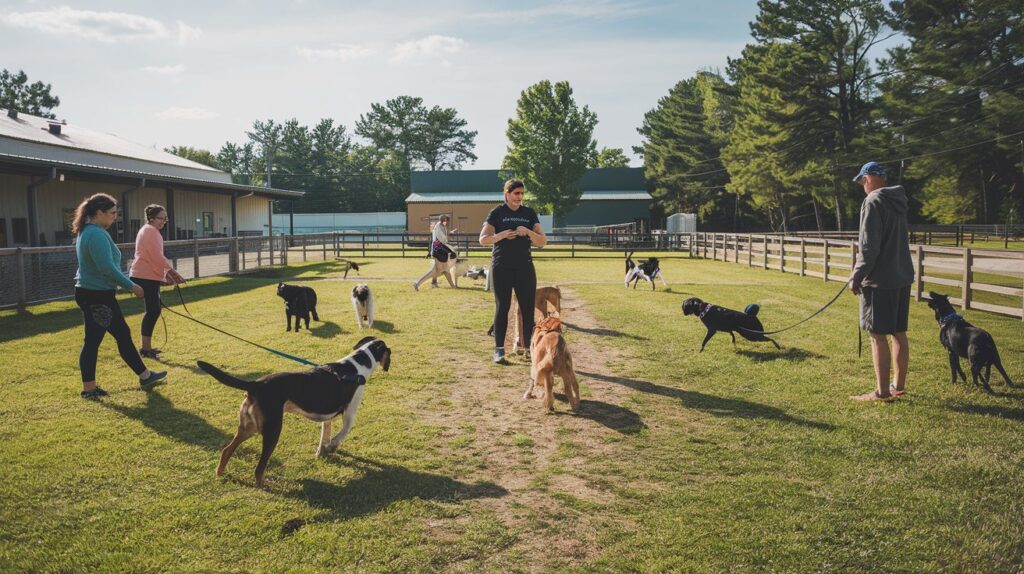
Why Professional Training Matters
While some dog owners attempt to manage aggression on their own, professional trainers bring expertise and tailored approaches that ensure better outcomes. Here’s why hiring a professional is essential:
- Expertise in Behavioral Science: Trainers understand canine psychology and can identify the cause of aggression.
- Safety Measures: Professionals implement safe training techniques to prevent harm to both the dog and others.
- Customized Training Plans: Each dog’s needs are unique, and trainers develop strategies accordingly.
- Faster Results: With experience and structured methods, trainers achieve quicker and more lasting results.
Choosing the Right Aggressive Dog Training Near Me
When searching for “aggressive dog training near me” consider the following factors:
- Trainer Qualifications
- Look for certifications from reputable organizations such as the International Association of Canine Professionals (IACP) or the Certification Council for Professional Dog Trainers (CCPDT).
- Training Methods
- Positive reinforcement techniques are widely recommended for aggressive dogs. Avoid trainers who rely on punishment-based methods.
- Reviews and Testimonials
- Read reviews and ask for references from previous clients to gauge the trainer’s success rate.
- Facility and Equipment
- Visit the training facility to ensure it is safe, clean, and equipped for handling aggressive dogs.
- Follow-Up Support
- Choose a trainer who offers post-training support to address any recurring issues.
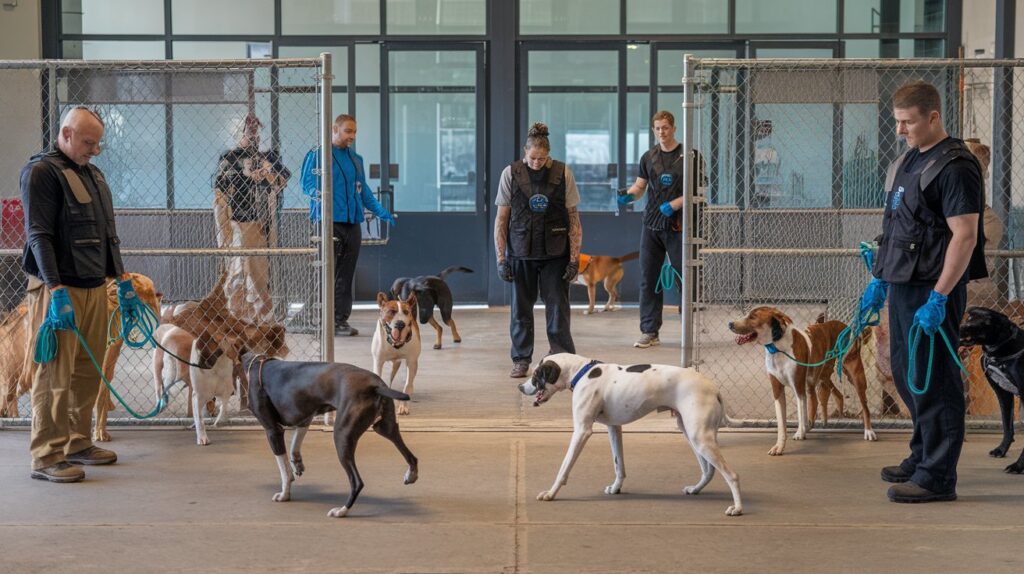
Effective Aggressive Dog Training Techniques
1. Counter-Conditioning
This technique involves changing the dog’s response to triggers by associating them with positive experiences. For example:
- A dog afraid of strangers may receive treats whenever a new person approaches, shifting its perception from fear to reward anticipation.
2. Desensitization
Gradual exposure to triggers helps reduce aggressive responses. Start with low-intensity exposure and slowly increase the level as the dog becomes more comfortable.
3. Obedience Training
Basic commands like “sit,” “stay,” and “leave it” provide control in high-stress situations. These commands form the foundation for managing aggression.
4. Use of Professional Tools
Tools like head halters, muzzles, or leash harnesses can provide additional control while training an aggressive dog.
5. Behavior Adjustment Training (BAT)
This method encourages dogs to make better choices when faced with triggers. It emphasizes giving the dog space and rewarding calm behavior.
Local Statistics and Insights
Understanding the prevalence of dog aggression in your area can help contextualize your training needs. According to recent studies:
- Approximately 15% of dog owners report aggressive behavior in their pets.
- Over 75% of dog aggression cases are successfully managed through professional training.
- Most aggression incidents involve untrained dogs or those with untreated behavioral issues.
This highlights the importance of seeking local training services promptly.
Top Benefits of Training Your Aggressive Dog
Professional training offers numerous benefits beyond managing aggression:
- Improved Bond: Training fosters trust and understanding between you and your dog.
- Enhanced Safety: Proper training reduces the risk of injuries or accidents.
- Social Compatibility: Trained dogs are more comfortable in social settings, whether around people or other animals.
- Peace of Mind: Knowing your dog is well-behaved alleviates stress for you and your family.
DIY Training Tips to Supplement Professional Guidance
While professional help is invaluable, you can implement these tips at home:
- Stay Calm and Consistent: Dogs respond to consistent commands and calm energy.
- Avoid Punishment: Harsh discipline can worsen aggression and erode trust.
- Monitor Triggers: Keep a record of situations that provoke aggression to help trainers address the root cause.
- Use Treats Wisely: Positive reinforcement with treats or praise encourages good behavior.
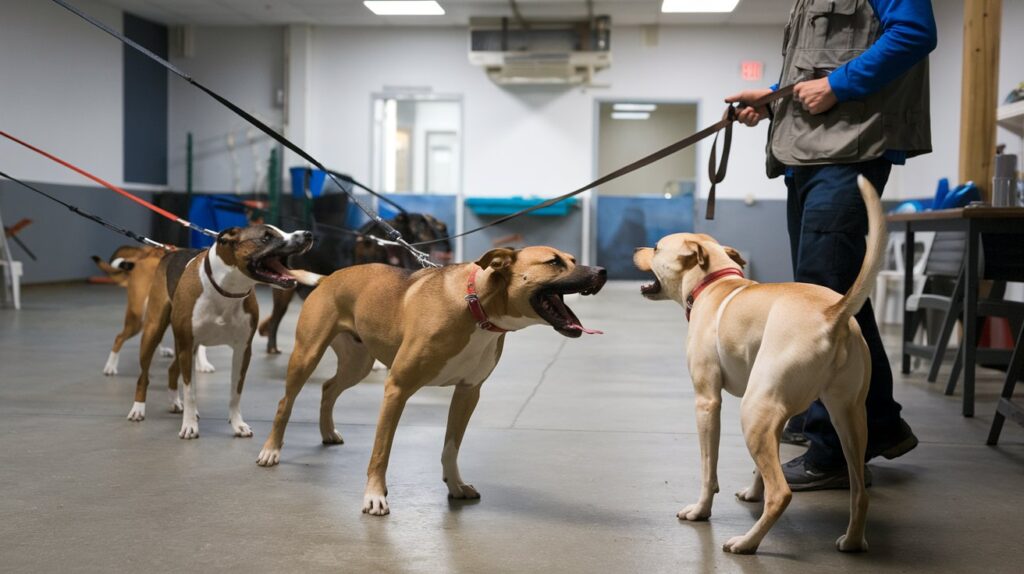
Red Flags to Avoid in Aggressive Dog Training
When searching for “aggressive dog training near me” beware of these warning signs:
- Lack of Credentials: Trainers without certifications may lack the expertise to handle aggression.
- Punishment-Based Methods: Avoid trainers who use harsh techniques, as they can exacerbate aggression.
- Generic Plans: One-size-fits-all approaches are ineffective for addressing unique behavioral issues.
Conclusion
Aggressive dog training requires patience, consistency, and professional guidance. By understanding the root causes of aggression and selecting a qualified trainer, you can transform your pet’s behavior. When searching for “aggressive dog training near me” prioritize expertise, positive reinforcement methods, and tailored approaches. With the right support, your dog can become a safe, well-behaved companion, enriching your life and those around you.
Also Read: When Should You Start Dog Training – A Comprehensive Guide
FAQs:
1. I am worried about my dog’s aggression. What should I do?
Start with a professional evaluation. Many trainers offer free consultations to assess your dog’s needs.
2. How can I find a reputable trainer near me?
Check online reviews, ask for recommendations from other pet owners, and interview potential trainers.
3. What types of aggression do trainers address?
Trainers can help with leash aggression, resource guarding, fear-based aggression, and more.
4. Is aggressive dog training always necessary?
Not always! Sometimes, behavior modification and environmental changes can be effective.
5. How much does aggressive dog training cost?
Prices vary greatly depending on the trainer’s experience, your dog’s needs, and the training methods used.
6. What can I do at home to help?
Practice basic obedience commands, provide plenty of exercise, and create a calm and predictable environment.

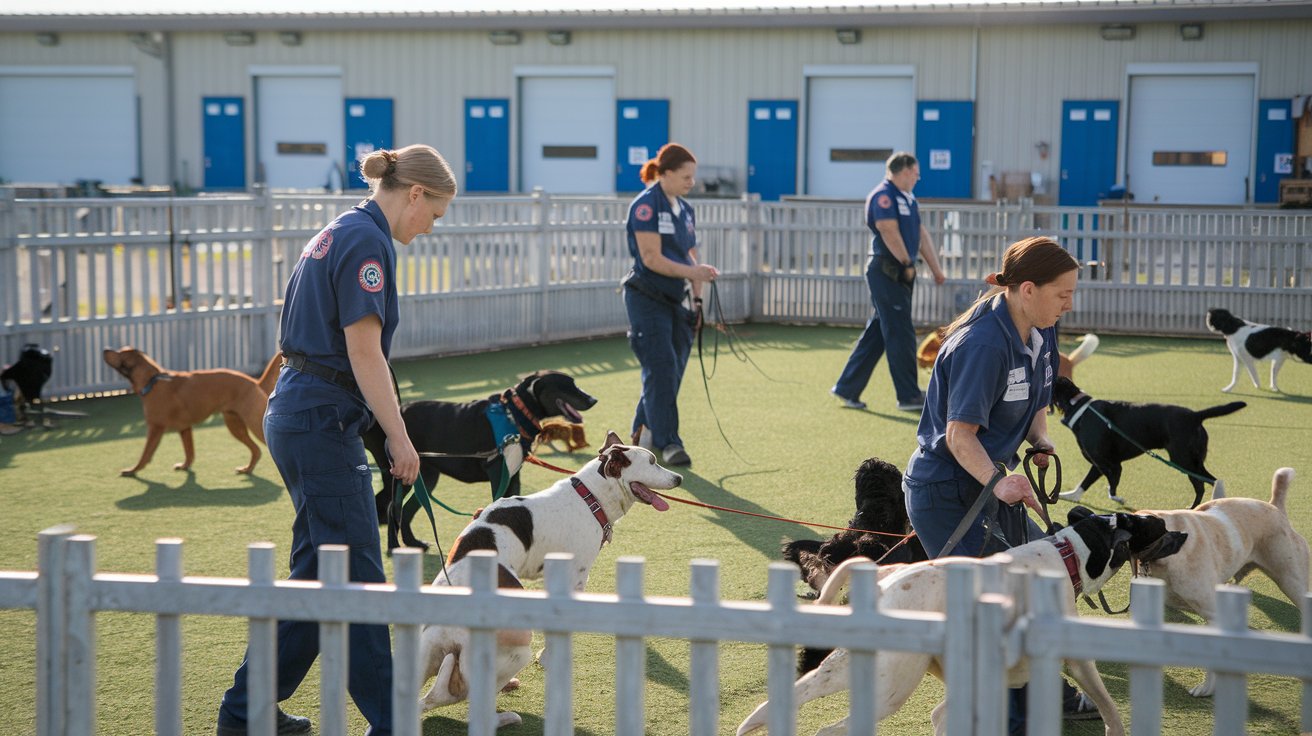

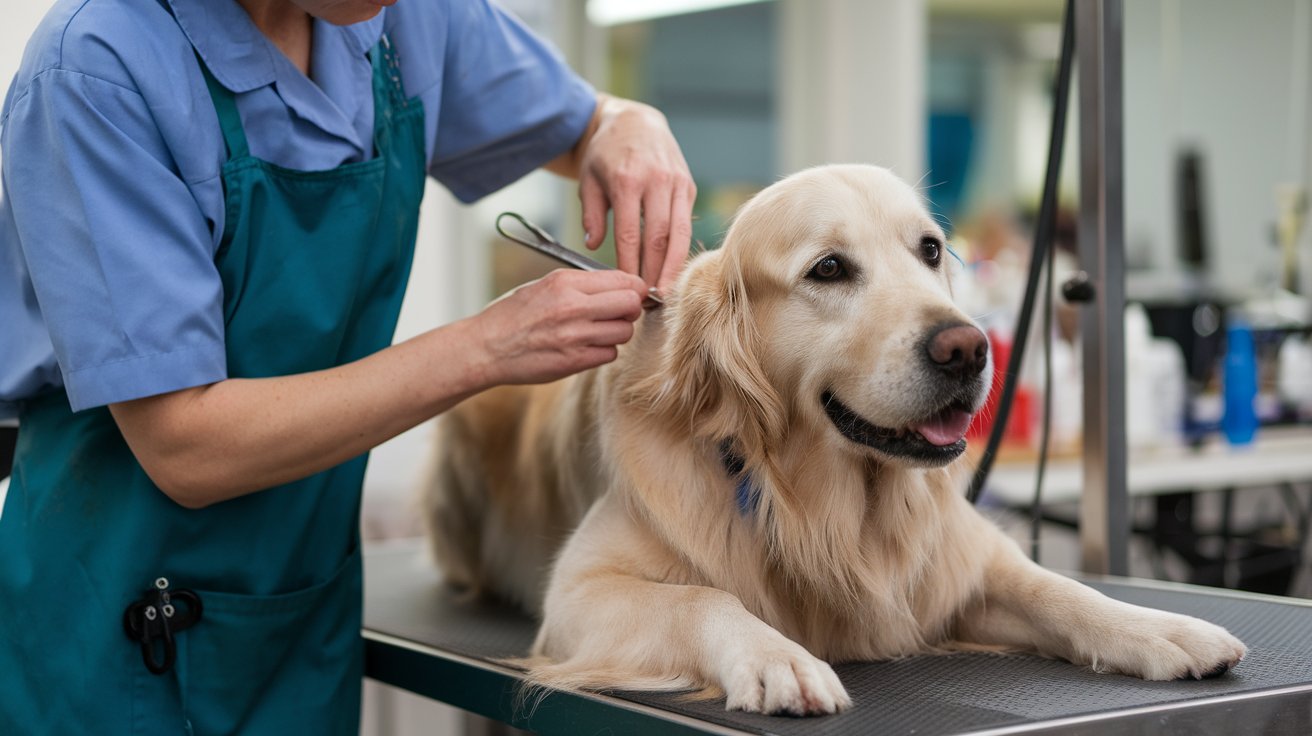

One thought on “Aggressive Dog Training Near Me: Finding the Best Trainers”